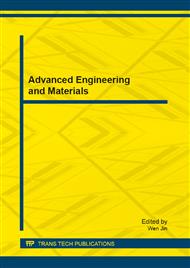p.230
p.236
p.241
p.248
p.252
p.258
p.263
p.269
p.275
Creep Behavior of 409L and 436 Ferritic Stainless Steels Applied for Automotive Exhaust System
Abstract:
In order to investigate the creep behavior and understand its deformation mechanism of automotive exhaust pipe materials, this study conducted creep experiments of 409L and 436 ferritic stainless steels at both 600°C and 750°C under different stress levels. After creep tests, crept specimens were analyzed on the microstructure and fracture surfaces by the use of scanning electron microscopy. From creep data, two important material coefficients, namely, M of Monkman-Grant relationship and K of Coble creep equation are calculated for predicting the material creep life. Results show the creep resistance of 436 stainless steel is better than that of 409L stainless steel, because the 436 stainless steel has more Ni, Cr, and Mo contents. As the creep mechanism, all tests show grain boundary diffusion or Coble creep is the dominate deformation mechanism, except at higher temperature 750 °C and higher stress levels.
Info:
Periodical:
Pages:
252-257
Citation:
Online since:
February 2013
Authors:
Price:
Сopyright:
© 2013 Trans Tech Publications Ltd. All Rights Reserved
Share:
Citation:


